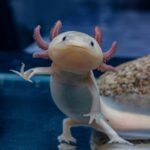African Rain Frog: Nature’s Little Burrower
The African rain frog, also known as Breviceps, is a fascinating amphibian found in Southern Africa. There are several species within this genus, including the Desert Rain Frog (Breviceps macrops) and the Cape Rain Frog (Breviceps gibbosus). These small creatures have some interesting adaptations that help them survive in their unique habitats.
Physical Characteristics
One of the most distinctive features of the African rain frog is its round body and short limbs. They usually range between 2 to 5 centimeters in length. Despite their small size, they have a robust and sturdy build. Their skin is granular and often varies from shades of brown to orange, helping them blend into their surroundings.
Their eyes are relatively large compared to their head and positioned close together. This gives them a somewhat comical appearance but plays a vital role in their burrowing lifestyle. Their toes have small pads, enabling them to dig efficiently.
Habitat and Distribution
African rain frogs are primarily found in South Africa, Mozambique, and neighboring countries. They inhabit diverse environments, from sandy coastal plains to arid inland regions. These frogs prefer loose, sandy soils where they can easily dig burrows.
The burrows provide shelter from predators and extreme weather conditions. During the day, they avoid the scorching sun by staying underground and come out at night to feed and mate.
Feeding Habits
The diet of an African rain frog includes various small invertebrates. They prey on ants, termites, beetles, and other small insects. Their feeding strategy is simple but effective. They use their sticky tongue to catch prey quickly.
These frogs have an impressive ability to hunt at night, even in complete darkness. They rely on their keen sense of smell and touch rather than sight to locate prey. This nocturnal feeding habit reduces competition and predator encounters.
Behavior and Adaptations
African rain frogs have several unique behaviors and adaptations. Perhaps the most notable is their ability to inflate their bodies when threatened. This makes them look larger and more formidable to potential predators. They also produce a high-pitched squeal that can startle and deter threats.
Another interesting adaptation is their burrowing technique. Instead of using their forelimbs, rain frogs utilize their hind legs to dig. This allows them to create deeper and more secure burrows quickly.
During mating season, males call out with a distinctive croaking sound to attract females. Once a female is located, the male climbs onto her back in a behavior known as amplexus. This position ensures that eggs are fertilized as they are laid.
Reproduction and Lifespan
Mating season is closely linked to the rainy season, which provides the necessary moisture for egg development. Females lay their eggs in burrows, where they are protected from the external environment.
Interestingly, African rain frogs exhibit direct development. This means that their eggs hatch directly into small froglets, bypassing the tadpole stage entirely. This adaptation eliminates the need for standing water, which is often scarce in their habitats.
The exact lifespan of African rain frogs in the wild is not well-documented. However, like many small amphibians, they are believed to live several years if environmental conditions are favorable and predation is minimal.
Conservation Status
Currently, most species of African rain frogs are not considered threatened. However, habitat loss due to urban development, agriculture, and climate change poses potential risks. Conservation efforts focus on preserving natural habitats and conducting research to better understand their ecology and behavior.
Some species, like the Cape Rain Frog, are more vulnerable due to their limited range and specific habitat requirements. These frogs are sometimes considered indicators of environmental health, as changes in their population can reflect broader ecological impacts.
Interesting Facts
- African rain frogs are often featured in viral internet videos due to their unique appearance and vocalizations.
- Their scientific name, Breviceps, means short head, which describes their compact head structure.
- Unlike many amphibians, they are not reliant on water bodies for any life stages, making them quite adaptable to dry environments.
- These frogs are fossorial, meaning they spend most of their life underground.
The African rain frog continues to intrigue scientists and nature enthusiasts alike. Their survival strategies in challenging environments make them a subject of significant interest and research. Understanding these small creatures contributes to our broader knowledge of amphibian biodiversity and conservation needs.
“`




Subscribe for Updates
Get the latest articles delivered to your inbox.
We respect your privacy. Unsubscribe anytime.